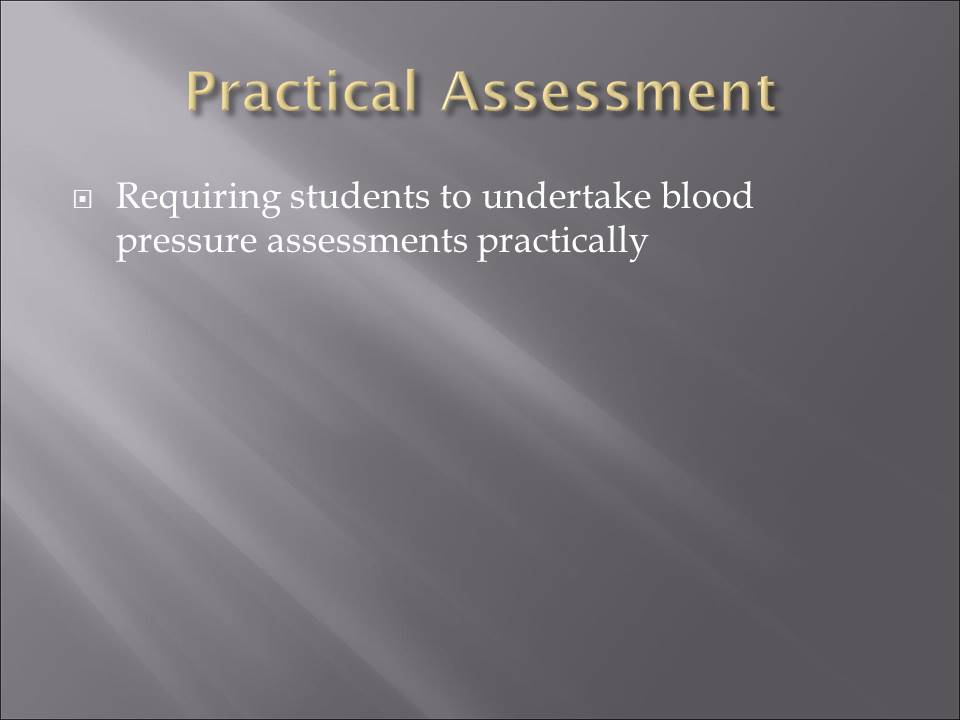Instructional Units
- Scaffolded Instruction
- Modeling
- Cooperative Learning
- Having Choices
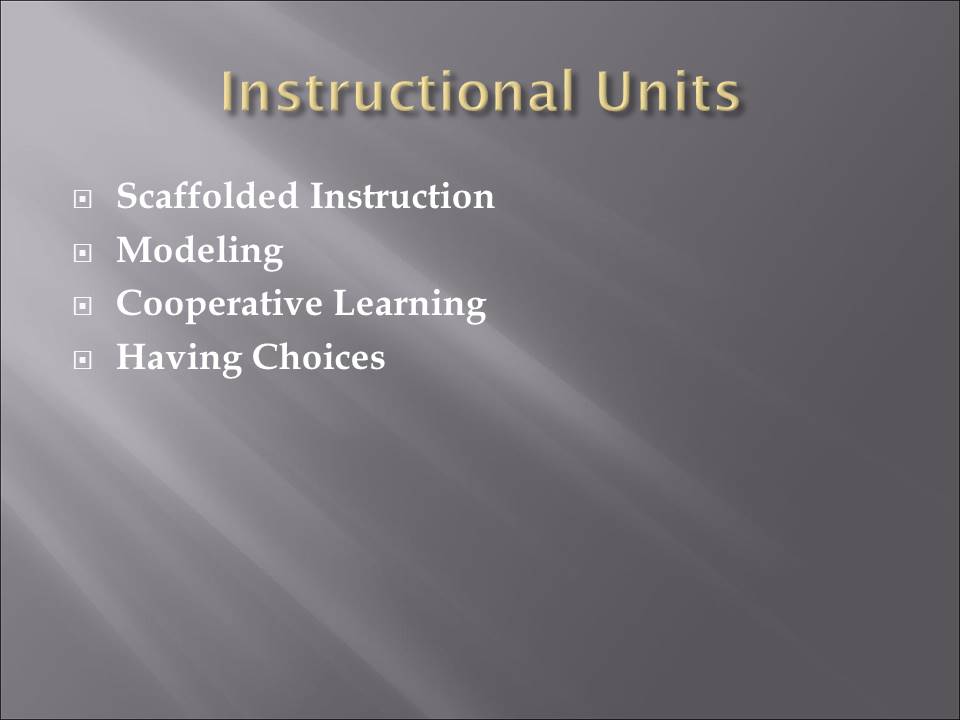
Scaffolded Instruction
- Students will be required to practice independent learning
- Support will be given to students whenever they get stuck while learning alone
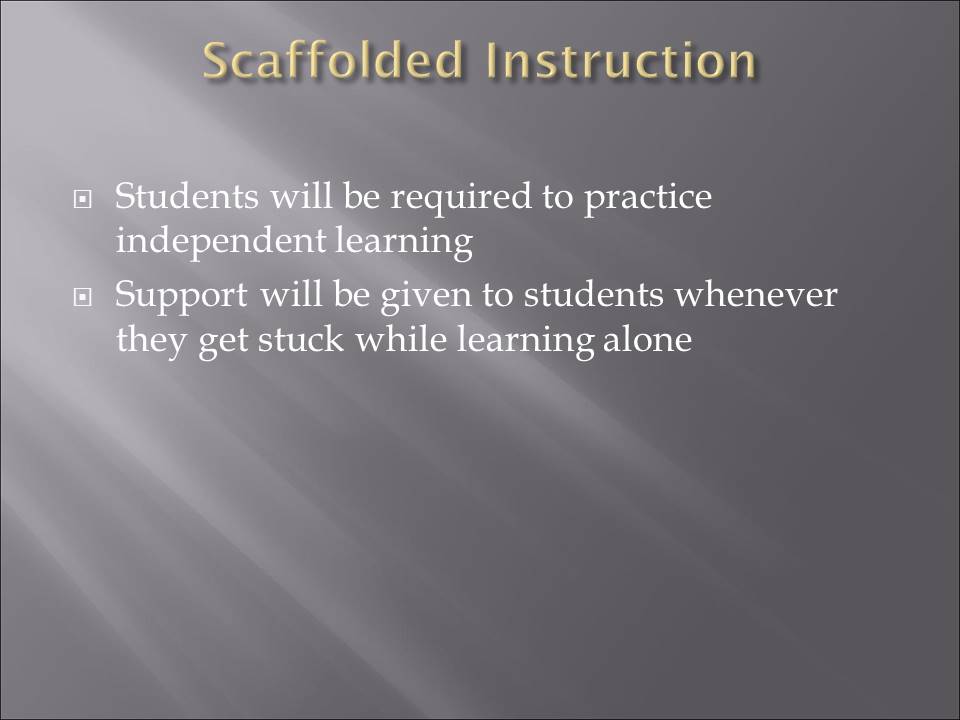
Modeling
- Students will be assisted to construct the meaning and strategies associated with assessing high blood pressure as a clinical practice.
- Literature used will be used as models to expose the strategies and skills needed in assessing blood pressure.
- The lessons may be formal or informal
- Modeling will be done through reading aloud, demonstration and shared writing.
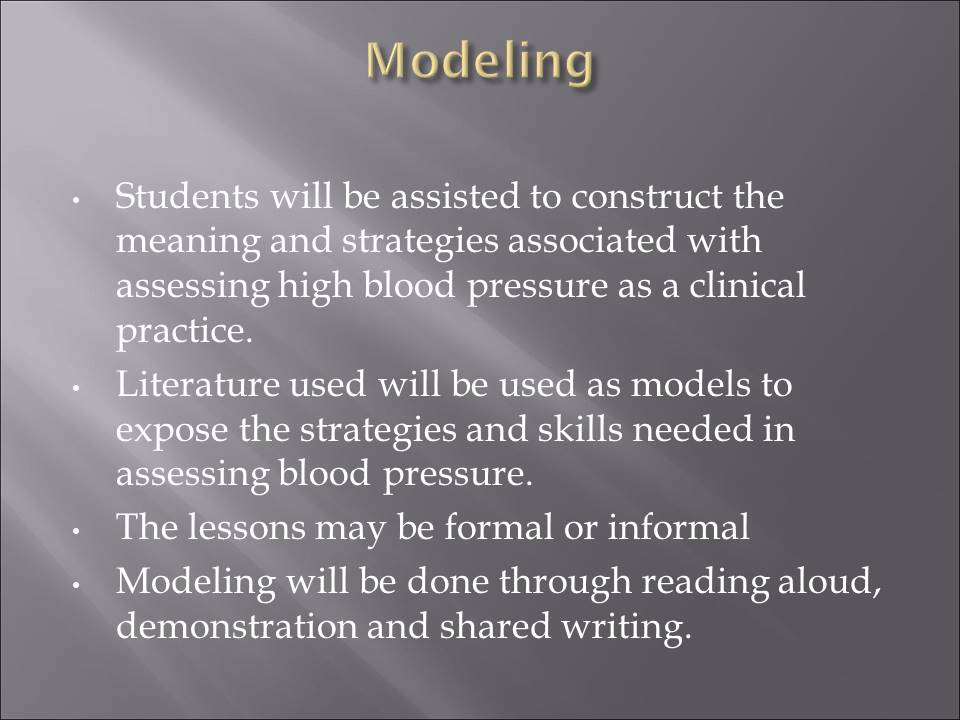
Cooperative Learning
- Students will learn by engaging experienced individuals on how to assess blood pressure.
- Often, individuals who will be engaged will be experienced peers who are knowledgeable about blood pressure assessment.
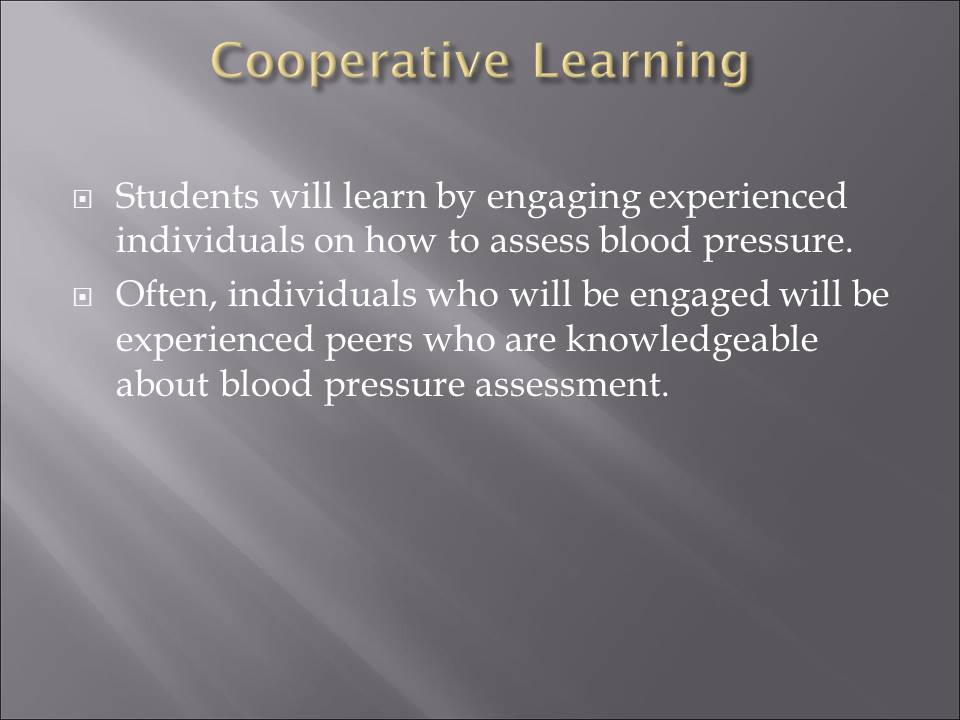
Having Choices
Having choices to assess blood pressure will be availed to help students choose the strategy that best meets their learning needs.

Learning Activities
- Independent reading and writing
- Prior Knowledge Activation
- Problem solving exercises
- Prioritized Planning
- Guided multiple choice exercises
- Clickable images
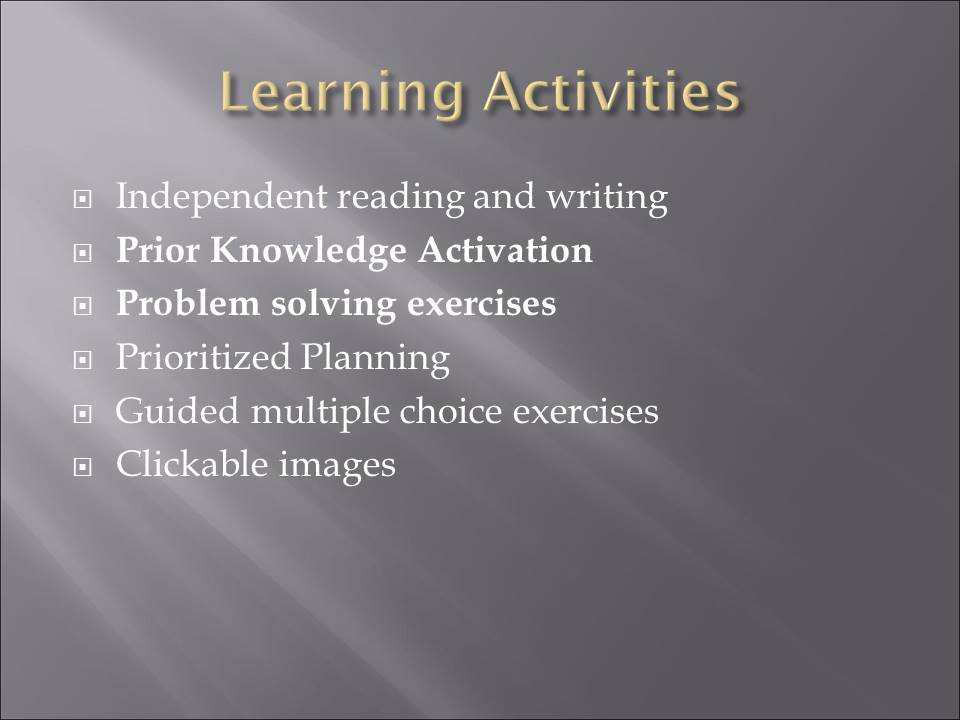
Independent Reading and Writing
Independent studying will be encouraged after students have examined existing literature regarding blood pressure assessment.

Prior Knowledge Activation
- Reviewing prior knowledge about existing literature will be used to orient students with blood assessment methods.
- Themes will be developed assess how blood pressure assessment works and how they can activate their prior knowledge about blood pressure activation.
- Students will activate their prior knowledge about blood pressure assessment before they can move into the next section of study.
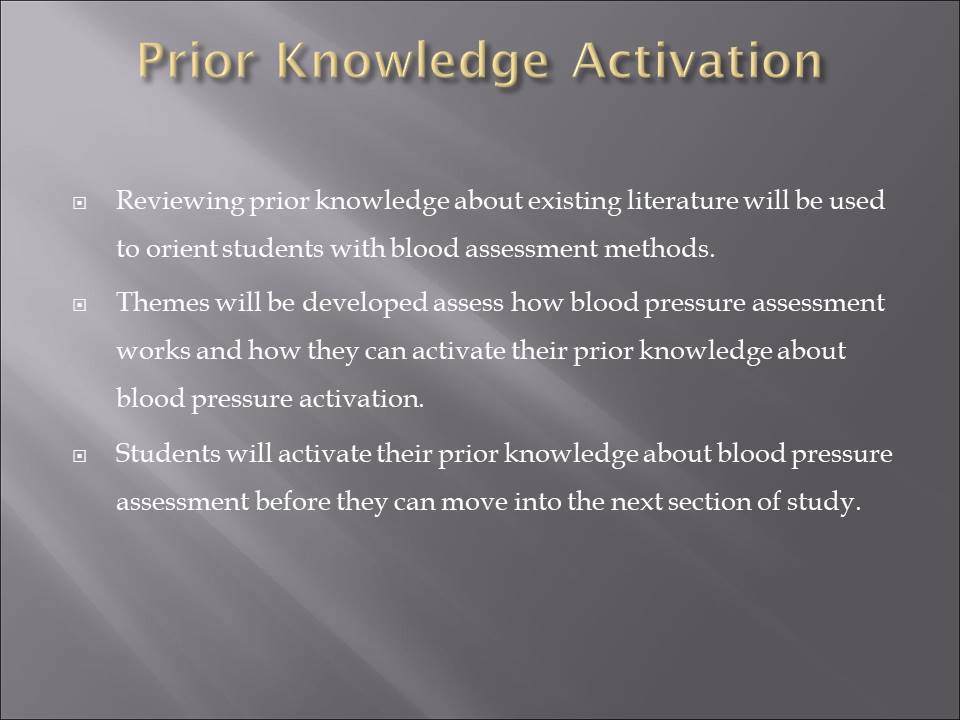
Problem solving exercises
- Subdivide the students into small groups of four (to six) where the groups will appoint a chairperson to lead the group in discussions.
- Ask each group to provide a response to one problem about high blood pressure assessment and evaluate their response
- Summarize the results of each question
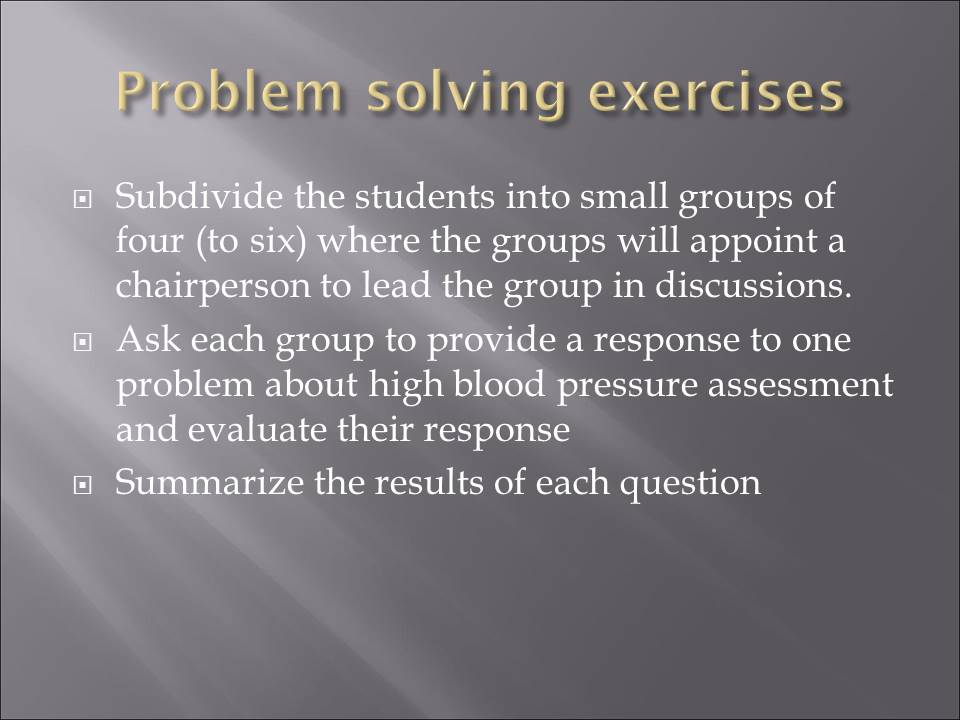
Prioritized Planning
- Identify priority techniques to be studied in blood pressure assessment.
- Develop a list of factors that cause high blood pressure
- Develop a list of factors to be considered in high blood pressure assessment.
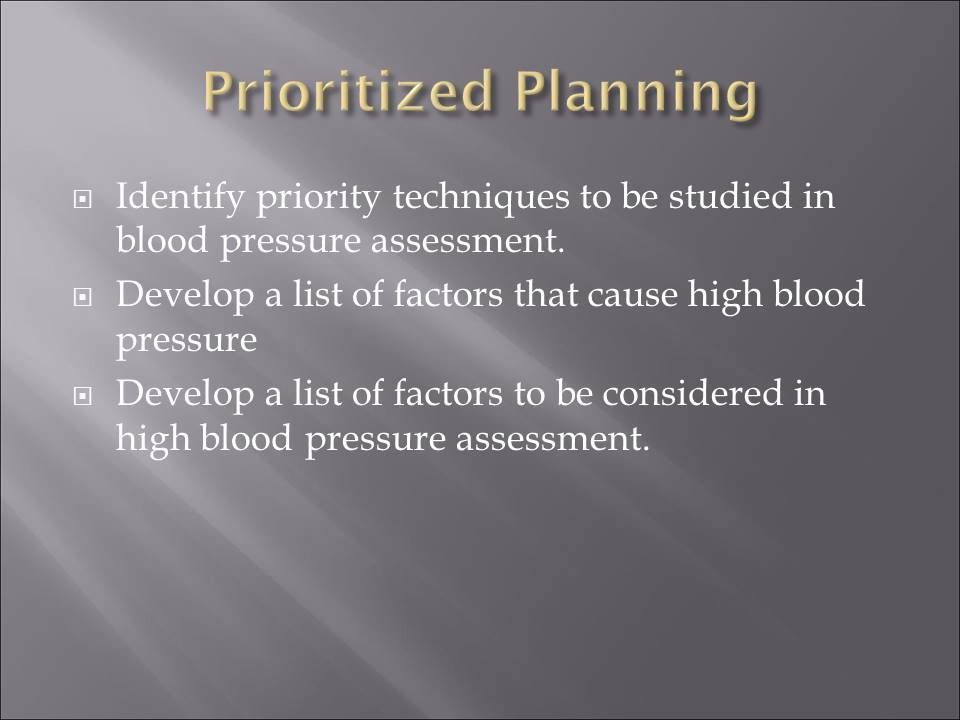
Guided multiple choice exercises
Students are provided with hints that enable them to remember the blood pressure assessment methods.
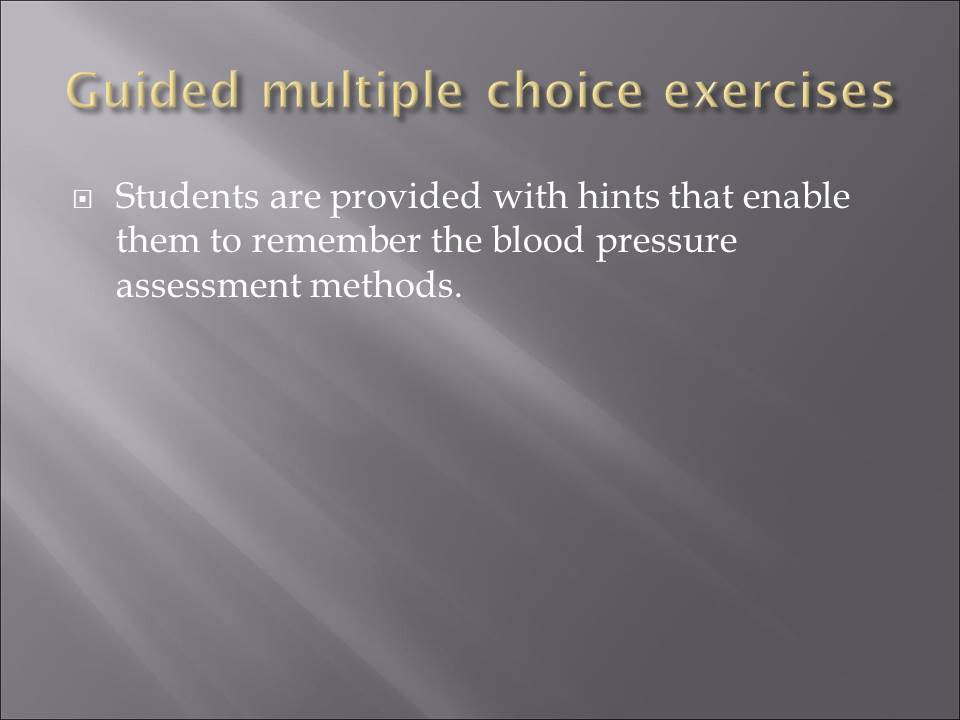
Clickable images
Students are required to click on the right images that show the correct blood pressure assessment method (though interface design).
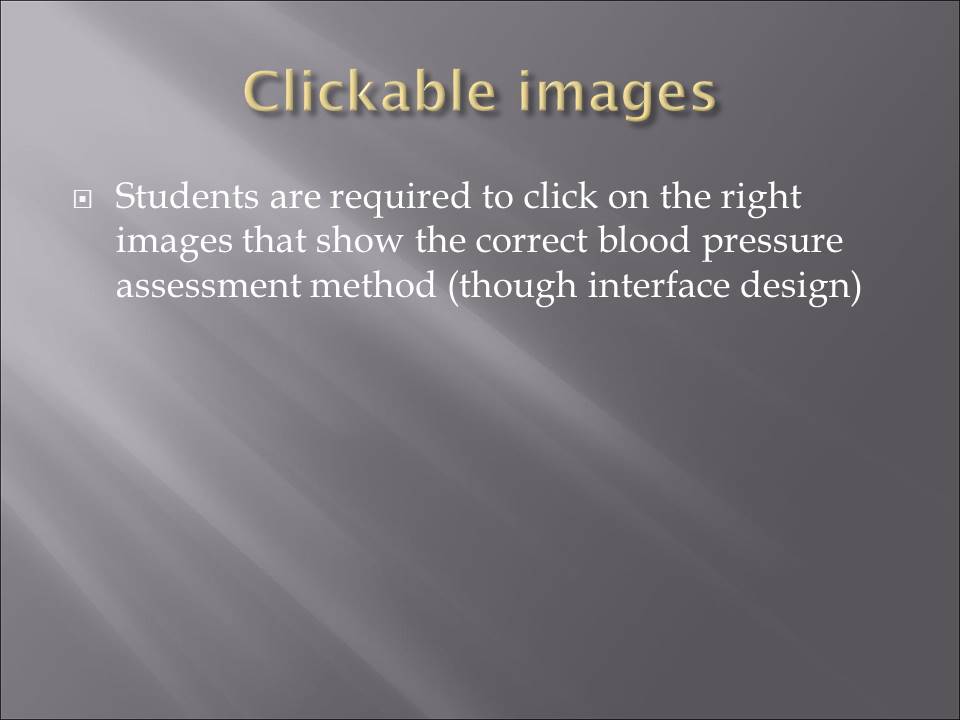
Student Assessment methods
- Continuous Assessment tests
- Assessing Student Attitudes
- Assessing Student Agreement
- End-of-Program Survey
- Portfolio Assessment
- Self assessment
- Peer assessment
- Overall assessment
- Simulation Assessment
- Practical Assessment
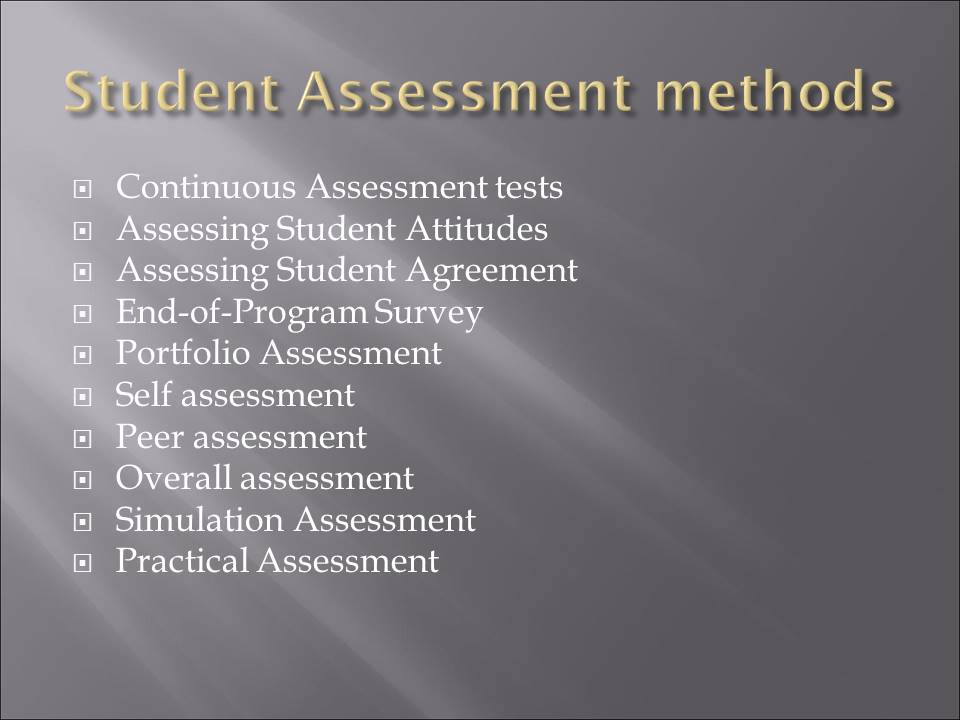
Continuous Assessment tests
- Students will be given minute paper assessments
- Chain note assessment
- Memory matrix assessment
- Directed paraphrasing assessment
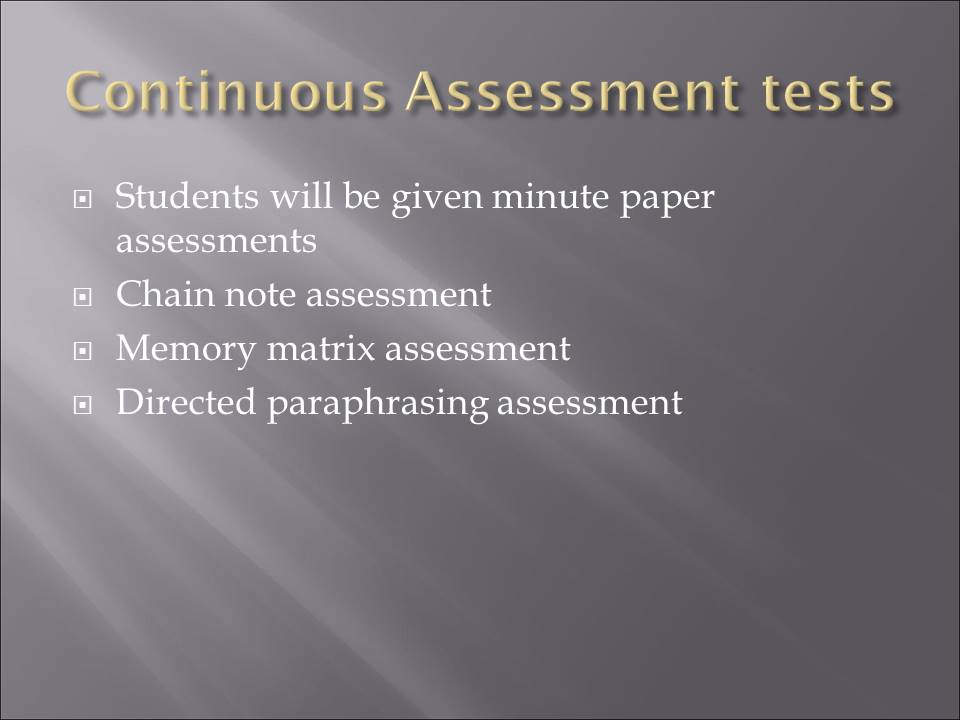
Assessing Student Attitudes
- Assessing student attitudes towards the learning experience
- Evaluating student agreement with the learning outcomes
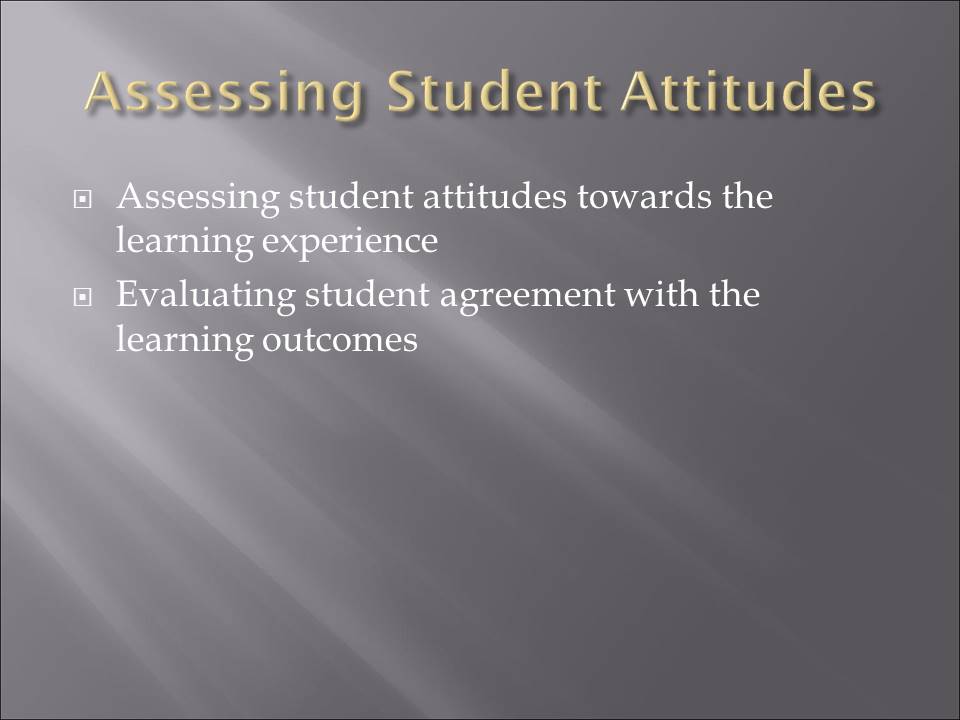
Assessing Student Agreement
Categories student responses in several categories as either strongly agree, strongly disagree, neutral and strongly disagree.

End-of-Program Survey
- Evaluate student perspectives
- Assessing student’s perspectives and their agreements with the service learning experiences
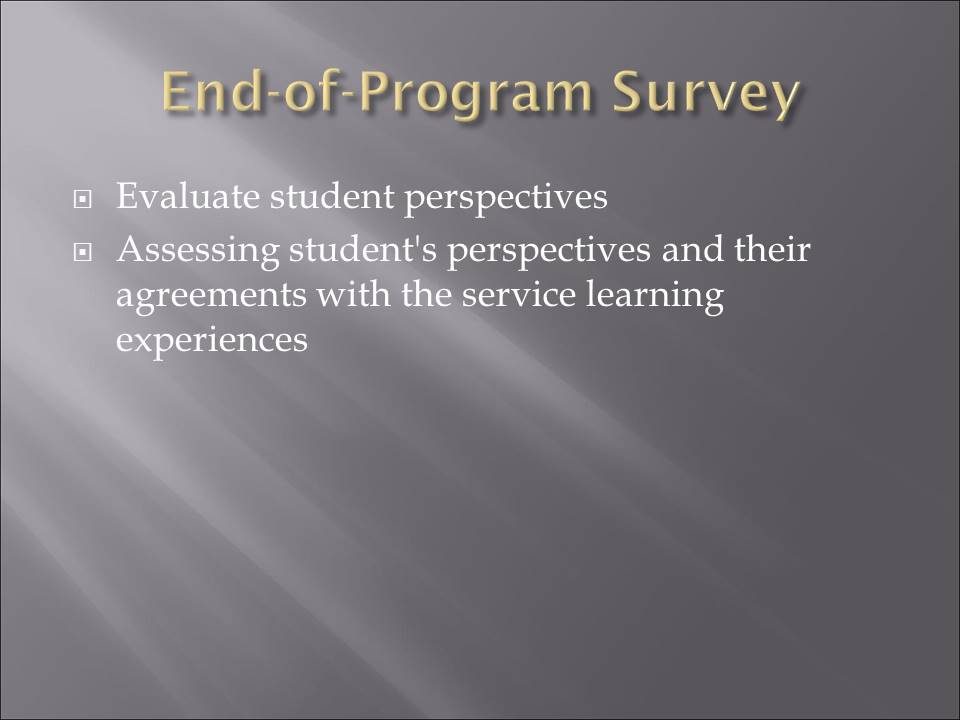
Portfolio Assessment
- The learning process is categorized into different learning segments
- Aimed at assessing different portfolios of the learning process that the students have understood
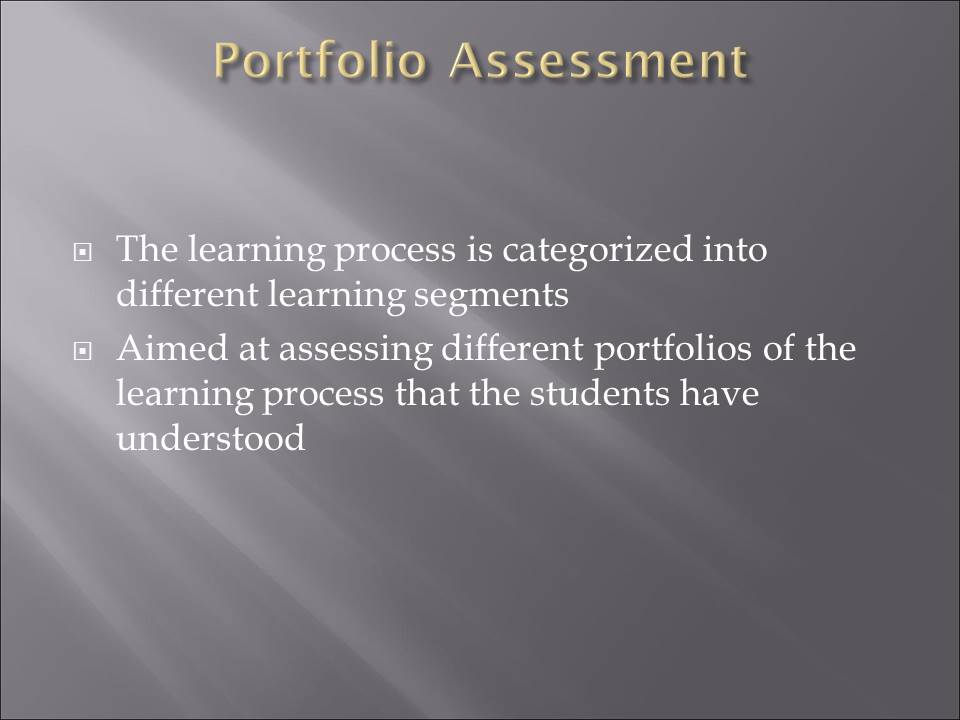
Self assessment
Students are to be told to assess their own understanding of their learning process.
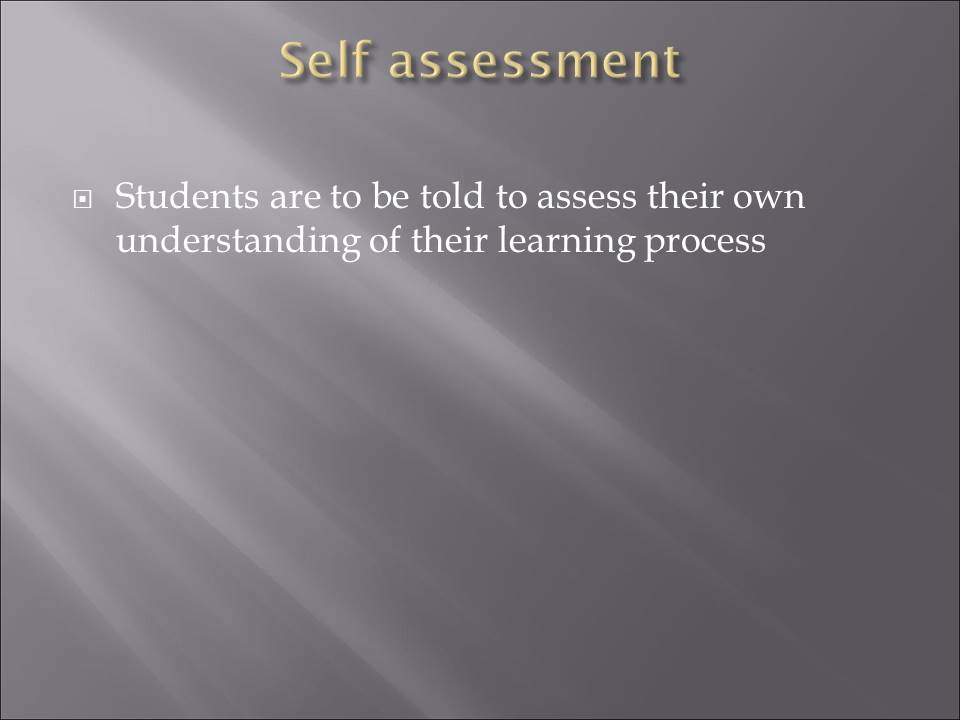
Peer assessment
- Students get an evaluation from their own peers
- Peer evaluation results are contrasted with student assessment standards
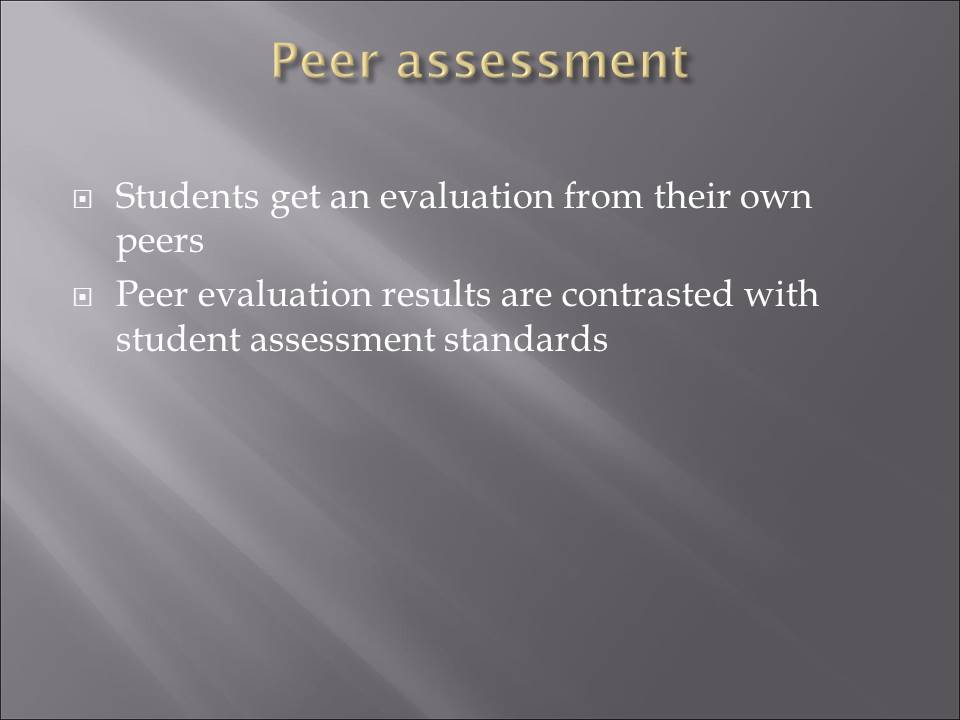
Overall assessment
- Required to assess entire portfolios of student learning process
- Student’s skill in assessment, analysis and definition of authentic high blood pressure assessment problems are analyzed
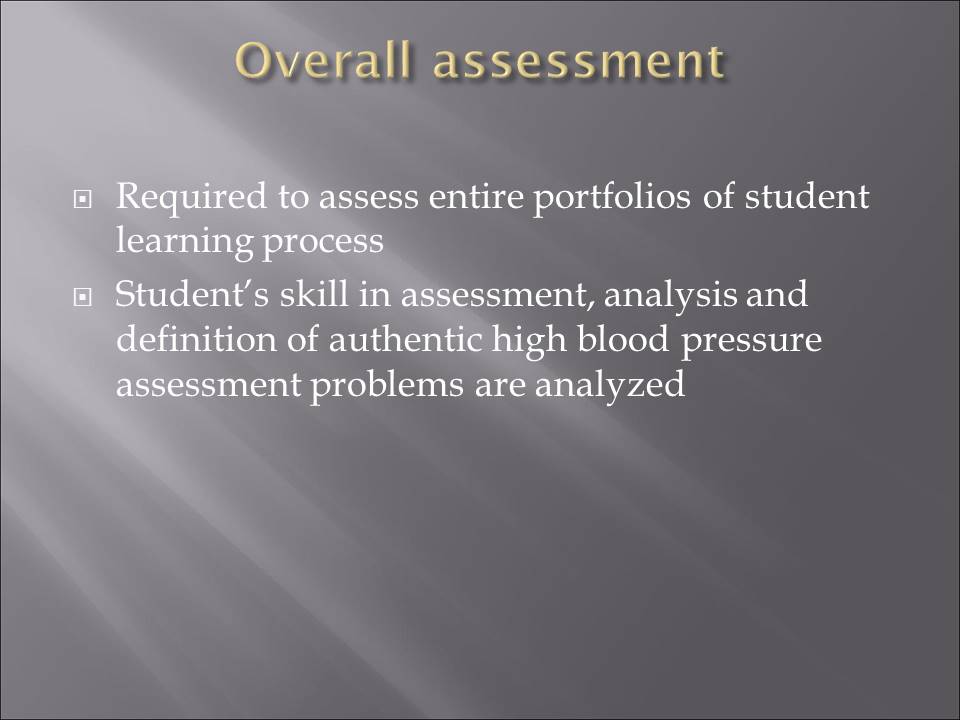
Simulation Assessment
- Used to assess students via computer aided techniques
- Student perceptions and values of the learni8ng process are assessed
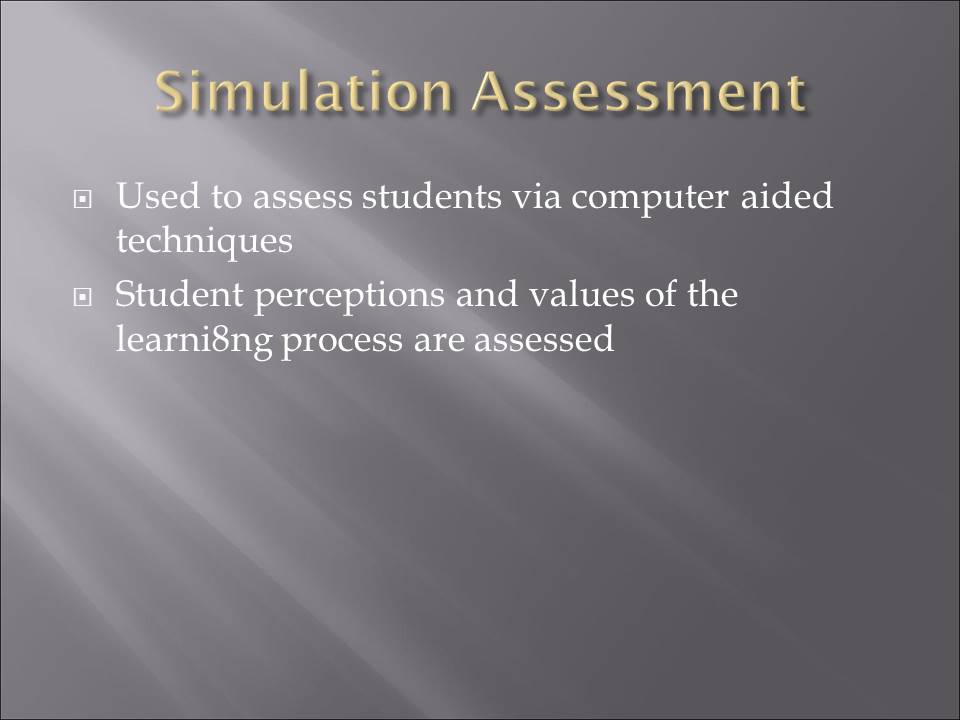
Practical Assessment
Requiring students to undertake blood pressure assessments practically.
